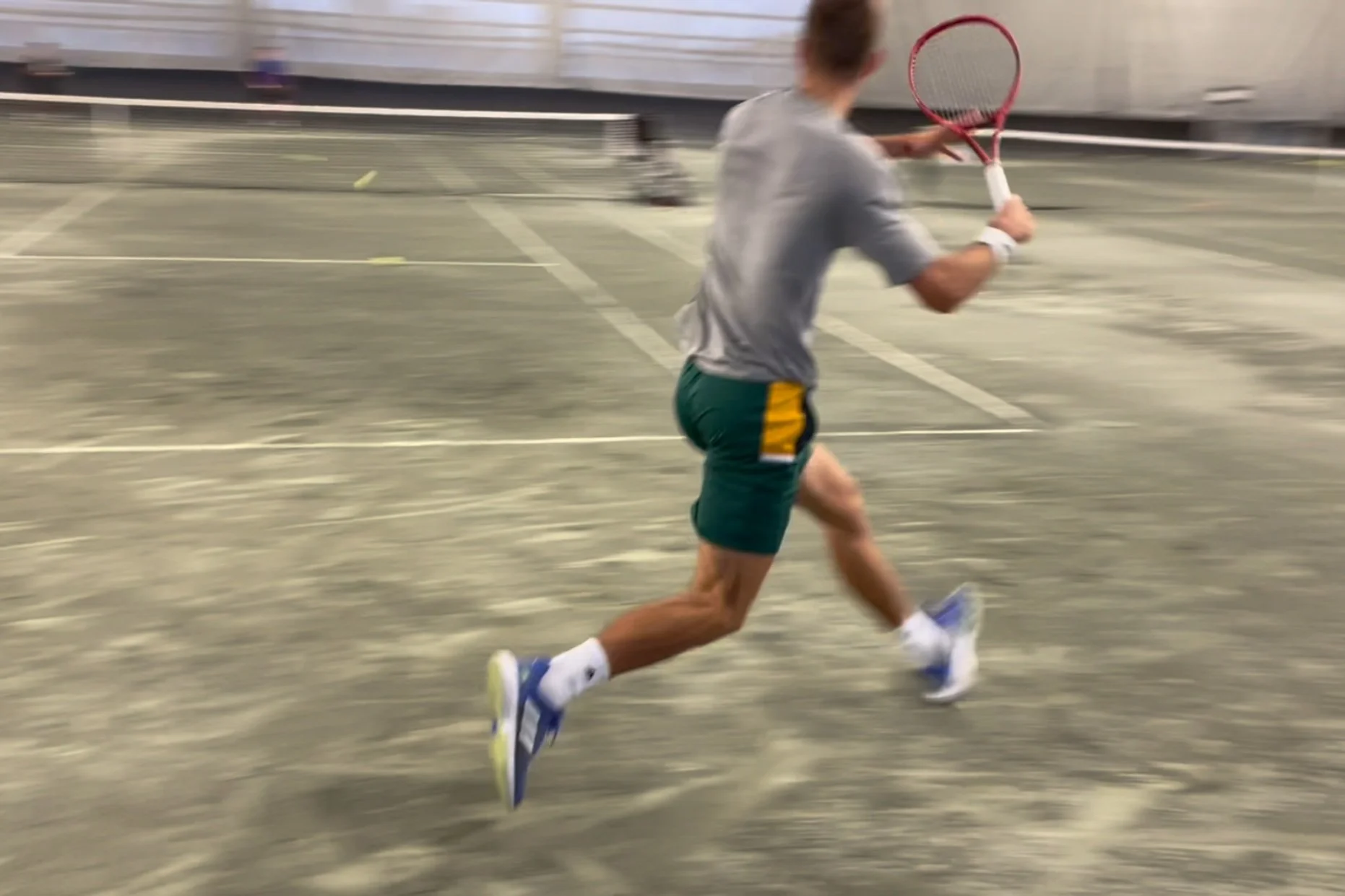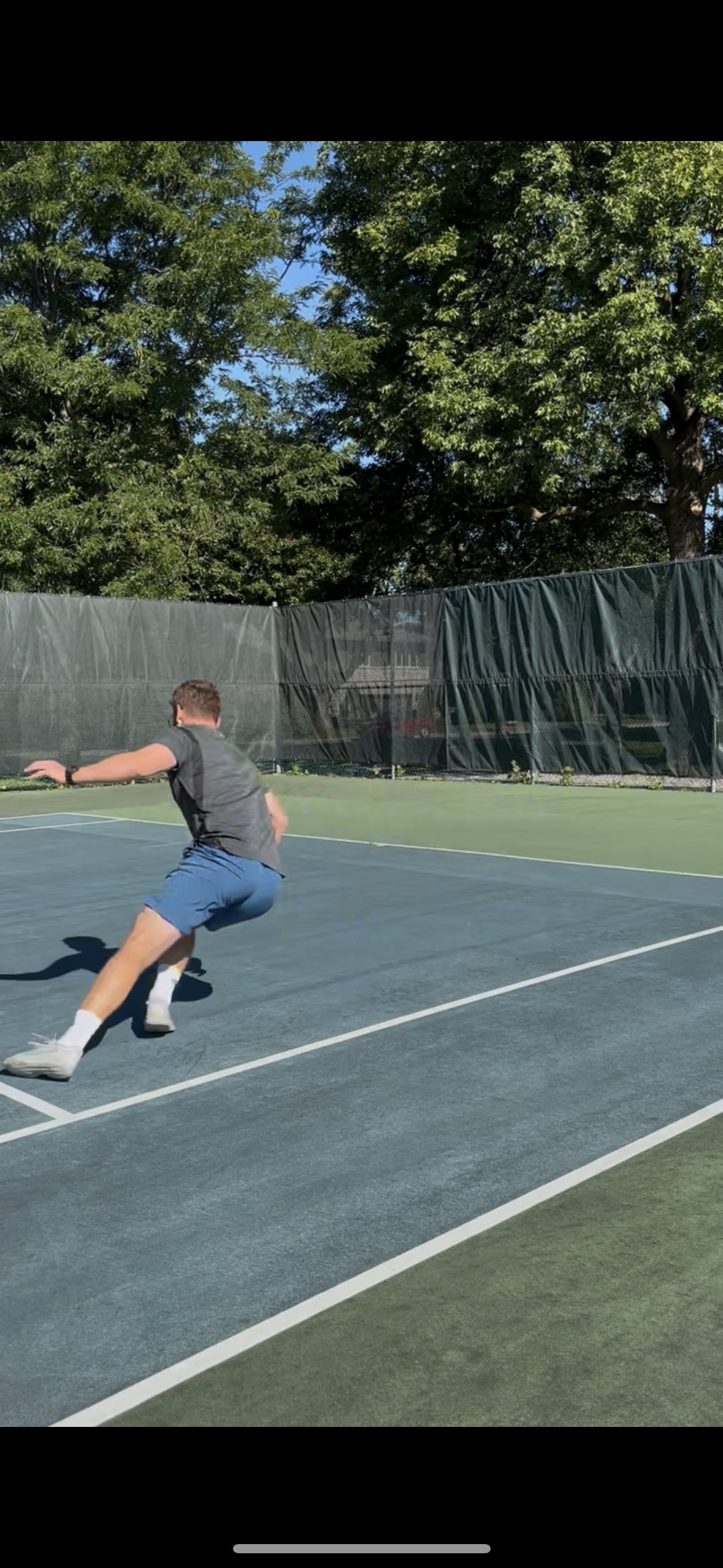For those that are unfamiliar with the term COD, it stands for change-of-direction. In the tennis world, things can get confusing as players and coaches often use the term ‘change direction’ when referring to hitting drills or on-court tactics. In other words, changing the direction of the ball (from a crosscourt exchange to a down-the-line switch, for instance). But that’s NOT what we’re talking about here.
I’ve spoken about COD in the past (you can check out THIS article for an extensive review). But in layman terms, it’s basically the instant when you move / orient your body from one direction, to another.
During the specific prep phase, as we’ve mentioned in previous sections, there is a greater emphasis on tennis play/practice - especially when compared with the general prep phase. Because of this, in my opinion, the need for conditioning work (in the traditional sense) is not as important - players, in effect, are getting a lot of their conditioning through tennis. Studies (Fernandez-Fernandez et al 2016, Kilit and Arslan 2018) are reaffirming this trend. See the ‘Learn More’ section for links to both studies.
I’ve previously written about the split step and it’s importance to successful movement - and ultimately, shot execution - in tennis. But do we truly understand what factors contribute to an effective split step? Why we should devote serious attention to it? Or even more, how to best train it?
Before we get into the details, you should know that there are 3 primary components that make up the split step:
This is the final part of a series of posts on change-of-direction (COD) in tennis…for now anyway. While we’ve touched on a number of key aspects of COD, researchers are only beginning to uncover the complexities of this athletic quality. This week’s post will briefly highlight why many in the tennis world believe that strength training doesn’t have a place when it comes to improving COD ability - and how the landscape has changed; and why straight line sprinting, although initially proposed as a key factor in COD ability, doesn’t really correlate after all. We’ll finish up with some practical examples of how purposeful strength training means can improve each phase of COD - the deceleration, planting and propulsive phases.
In previous posts on COD, we spoke about the importance of reactive strength. In particular, we emphasized the role leg and ankle stiffness plays in the production of reactiveness. Ultimately, high levels of reactiveness are predicated by very fast eccentric-concentric muscle actions. These actions impact a variety of movements in tennis, including any type of first-step reaction that involves very little changes in knee, hip and ankle amplitudes. `
But what about movements that have longer ground contact times? For instance, a player is forced into a deep lunge position - perhaps because of a fast low ball or because they’re retrieving a low volley at net. To recover from these types of scenarios requires qualities that extend beyond reactiveness. This is where strength and power qualities come into play. While reactiveness is great when joint angles are small, inertia is low and ground contacts are short, when these parameters are reversed, fast stretch shortening cycle (SSC) abilities won’t cut it.
Last week we introduced reactive strength and its underpinning qualities. If you haven’t read that post, I strongly encourage you to do so, as it’ll provide a scientific rationale for what’s to come in this article.
Recall that reactive strength is effectively the fast component of the stretch-shortening cycle (SSC) - SSC activity being a rapid change from an eccentric to a concentric contraction that produces more power than would be possible with a concentric only contraction. We also determined that reactive strength is quite important as it relates to change of direction (COD) in tennis. There are 2 reasons for this. First, it’ll improve a player’s split-step ability - effectively allowing for a faster first step initiation - AND it can help with movements - along with recoveries - that are short but require high levels of explosiveness (think of shots that are near you but are coming at you with speed).
The ability to respond quickly and efficiently to an oncoming shot, is perhaps one of the most important qualities a tennis player must possess. This ability is predicated on a number of factors including anticipatory skills, perception skills - picking up cues from the other side of the net, judging the ball appropriately etc. - along with physical qualities, one of them being reactiveness. Further to that, it helps when a player has tremendous change of direction (COD) abilities. Why? Because the player that can recover more efficiently after their previous shot, has a better chance to not only better 'see' the next shot, but also has the ability to respond to that shot with less ‘emergency’ - a term many coaches use.
Many of you have probably heard of the acronym SAQ before. If not, it’s referred to as speed, agility & quickness. Coaches & trainers from a variety of sports use these terms liberally and interchangeably. This is a problem. In the tennis world, many believe that these 3 qualities are supremely important for the movement success of an elite player. Another problem. When referring to speed, are we referring to maximum speed? Or something else? In tennis, as we’ll see later in this post, a player almost NEVER reaches top running speeds. Is it relevant then? Quickness, on the other hand, has multiple issues. First, what does it even mean? Does it mean being explosive? Does it deal with having fast feet (which is a misleading term in itself). Prominent researchers disregard quickness as a sport science term anyway - their reasoning...it’s too vague.









